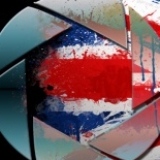- Forum
- General Discussion | Introductions | Off Topic Forum
- Photography General Discussion
- Two memory card slots
Two memory card slots
-
 Topic Author
Topic Author
- Alfonso Camil
- Lone Wolf
-
- Nikon D7200
- Followers: 102
- Posts: 234
-
Points:
5171
Post #680669
-

- garyrhook
- Oh Wise One
-
- Nikon D850, Nikon D750, Panasonic G7K
- Followers: 912
- Posts: 11103
-
Points:
67681
Post #680671
The primary reasoning behind two is backup. You can have your camera write images to both cards, in parallel. Therefore, so the logic goes, if one card turns out to be bad, you have another.
Professionals rely upon this as just an additional safety net.
You can also write RAW files to one card, and JPGs to another (at least on Nikon), and I've used this on vacation when all I had for editing/posting was an iPad, and it worked well, The RAW files were fine when I got home.
And there's overflow: moving from one card to the next when full. But given the size of cards now, I don't see the point. A 128MB card in my D850 can hold a few thousand images, far more than I now shoot in a day.
Plenty of professionals shot pleny of events (weddings included) with cameras with only one slot.
Cards rarely go bad on you. At least, good quality cards (Sandisk, Lexar, Samsung). I've used and discarded off-brands, but no longer.
Most folks aren't going to need redundancy.
So, while nice, it's not required by everyone.
-

- Shadowfixer1
- Photo Elder
-
- Olympus OMD E-M1 MKII
- Followers: 1349
- Posts: 5551
-
Points:
73205
Post #680672
-
 Topic Author
Topic Author
- Alfonso Camil
- Lone Wolf
-
- Nikon D7200
- Followers: 102
- Posts: 234
-
Points:
5171
Post #680673
-

- garyrhook
- Oh Wise One
-
- Nikon D850, Nikon D750, Panasonic G7K
- Followers: 912
- Posts: 11103
-
Points:
67681
-

- Nikon Shooter
- Oh Wise One
-
- 3S 3X 810 850
- Followers: 197
- Posts: 13795
-
Points:
88932
Post #680676
but my shots are as safe as the cards are… I couldn't go
for risking to lose the work nor the client.
Light is free… capturing it is not!
-
 Topic Author
Topic Author
- Alfonso Camil
- Lone Wolf
-
- Nikon D7200
- Followers: 102
- Posts: 234
-
Points:
5171
Post #680679
-

- 7Wishes
- New Kid On The Block
-
- Canon EOS 5D Mark IV and Canon EOS M5
- Followers: 61
- Posts: 49
-
Points:
3379
Post #680680
garyrhook wrote:
Alfonso Camil wrote: Oh, I see now. But if the camera is writing twice, does that use up double resources in the camera?
What resources might that be?
Other than the slight amount of electricity required, no.
Read write speeds are slower and are only as fast as the slowest card in camera. Shooting RAW to both cards would take at least twice as long to write to. The camera buffer fills quicker and takes longer to clear. The battery drains quicker.
-

- Nikon Shooter
- Oh Wise One
-
- 3S 3X 810 850
- Followers: 197
- Posts: 13795
-
Points:
88932
Post #680682
is copied — read BU — on the second card.
Light is free… capturing it is not!
-

- garyrhook
- Oh Wise One
-
- Nikon D850, Nikon D750, Panasonic G7K
- Followers: 912
- Posts: 11103
-
Points:
67681
Post #680691
7Wishes wrote: Read write speeds are slower and are only as fast as the slowest card in camera. Shooting RAW to both cards would take at least twice as long to write to. The camera buffer fills quicker and takes longer to clear. The battery drains quicker.
I'm not entirely sure that that is true for every camera. My Nikons seem to be gated by the slowest card, yes, but the writes happen in parallel. It's not one card then the other (again, on my Nikon).
So saying that read-write speeds are slower is, first off, not relevant. Write speeds are the issue, and no, it doesn't take twice as long. The buffer fills as fast as the buffer fills, which is nothing to do with the cards. The speed at which the buffer is emptied depends upon the cards.
I've never seen any measurable impact on battery life when using both slots (which I do all the time). YMMV.
-

- 7Wishes
- New Kid On The Block
-
- Canon EOS 5D Mark IV and Canon EOS M5
- Followers: 61
- Posts: 49
-
Points:
3379
Post #680694
garyrhook wrote:
7Wishes wrote: Read write speeds are slower and are only as fast as the slowest card in camera. Shooting RAW to both cards would take at least twice as long to write to. The camera buffer fills quicker and takes longer to clear. The battery drains quicker.
The buffer fills as fast as the buffer fills, which is nothing to do with the cards.
YMMV.
if this is the case, why the need for ever faster cards. For instance why does the new canon 1DX III have dual CFexpress card slots. I'll point you in the direction of a recent video at Fro Knows Photo comparing the buffer between the 1DX III and the Sony A9 II (from 35.16m), you'll notice how slow it is to clear the buffer and continue you shooting.
-

- garyrhook
- Oh Wise One
-
- Nikon D850, Nikon D750, Panasonic G7K
- Followers: 912
- Posts: 11103
-
Points:
67681
Post #680702
7Wishes wrote: if this is the case, why the need for ever faster cards. For instance why does the new canon 1DX III have dual CFexpress card slots. I'll point you in the direction of a recent video at Fro Knows Photo comparing the buffer between the 1DX III and the Sony A9 II (from 35.16m), you'll notice how slow it is to clear the buffer and continue you shooting.
The faster the device can write to the card, the faster the buffer is cleared. Having faster media helps, but there's also a constraint in the hardware, which faster media cannot overcome. Have you considered the possibility that the hardware in those two cameras is different?
Then: what does that have to do with this discussion? We're talking about the behavior of two cards in a single body, and nothing you've stated here seems relevant to that specific issue.
Also: Fro is a buffoon, and I care not not whit for anything he has to say. Worse than the Northrups.
-

- Pettigrew
- Photography Hooked
-
- Canon EOS 7D SLR
- Followers: 199
- Posts: 985
-
Points:
8247
Post #680792
Canon EOS 7D SLR | XT W/18-55 Kit Lens | Canon 50mm 1.8 | Tamron 17-50mm 2.8 | Canon 28-105mm | Canon 75-300mm | Canon 100mm 2.8 Macro | Canon 100-400
-

- Nikon Shooter
- Oh Wise One
-
- 3S 3X 810 850
- Followers: 197
- Posts: 13795
-
Points:
88932
Post #680797
Light is free… capturing it is not!
-

- 7Wishes
- New Kid On The Block
-
- Canon EOS 5D Mark IV and Canon EOS M5
- Followers: 61
- Posts: 49
-
Points:
3379
- Forum
- General Discussion | Introductions | Off Topic Forum
- Photography General Discussion
- Two memory card slots
Latest Reviews
Nikon’s retro-looking Nikon Zfc is anything but retro. Under its classic body is a host of features and amenities that make it a worthwhile compact mirrorless camera for 2024.
The Canon EOS R50 is one of the newest R-system cameras from Canon. Is it worth your money? Find out all the details you need to know in this comprehensive review.
The Sony FE 70-200mm f/2.8 GM OSS II is Sony’s flagship mirrorless zoom lens. As such, it’s loaded with features and has a top-shelf build quality that makes it a top pick!
The Leica SL2-S is an attractive, premium mirrorless camera with photo and video specs that are sure to impress. And with the legendary Leica name, you know this camera exudes quality!
Forum Top Posters
-
1TCav 8 posts
-
2Razky 5 posts
-
3CharleyL 5 posts
-
4Randy Shaw 5 posts
-
5Matt VanDyke 4 posts
-
6Prago 4 posts
-
7EOS_Fan 3 posts
-
8Conner 3 posts
-
9Hassner 3 posts
-
10Steve Zahra 3 posts
Latest Articles
The Olympus OM-D E-M10 Mark IV is a micro four thirds camera released in 2020. It’s an entry-level system along with the OM-D E-M5 Mark III. Use this guide to determine which one is best for you!
Blue hour photography might not be as well known as golden hour photography, but it is every bit as good a time to create epic images of landscapes. Learn how in this quick tutorial!
Nikon’s retro-looking Nikon Zfc is anything but retro. Under its classic body is a host of features and amenities that make it a worthwhile compact mirrorless camera for 2024.
Moving from taking snapshots of your dog to creating beautiful images doesn’t have to be that difficult! Use the tips outlined in this dog photography guide, and you’ll get better results in no time.
Acrylic print photos are a beautiful way to display your favorite images. But they don’t come without some questions. Get all the answers you need about this medium in this guide!
Where do you get your landscape photography inspiration? Is it from masters like Ansel Adams? Or perhaps viewing art from other genres? We’ve got these and a few other sources for you to check out!
The Canon EOS R50 is one of the newest R-system cameras from Canon. Is it worth your money? Find out all the details you need to know in this comprehensive review.
Too often, affordable online printing companies don’t meet your expectations of what a print should look like. But there are some choices that combine affordability with superb quality!

















